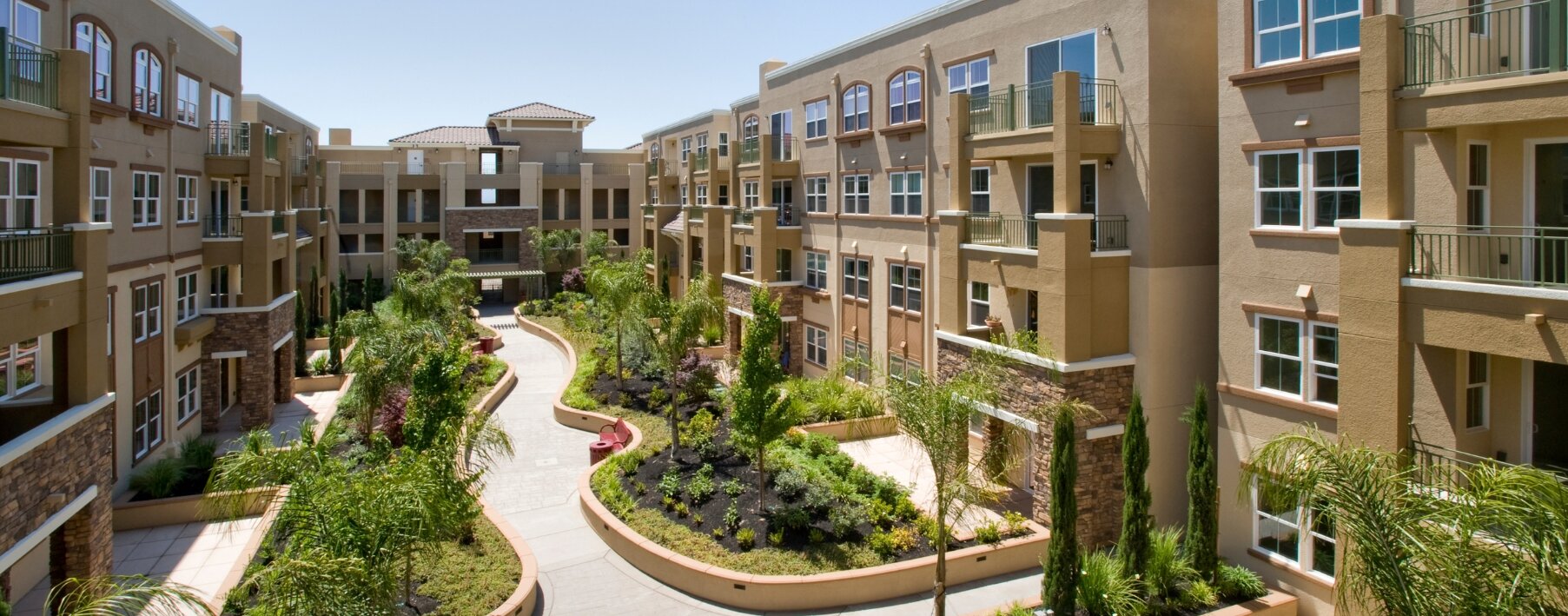The Benefits of Extended Replacement Cost

Homeowners insurance coverage gives you peace of mind that if your home were destroyed by any number of perils, you could replace or rebuild it. But what if rising construction, building materials, and labor costs meant the coverage limits you set years ago were no longer enough to protect you and your property adequately?
To prevent paying out-of-pocket if and when tragedy strikes, you might want to consider adding extended replacement cost coverage to your policy. This added protection can extend your policy’s limits following a covered disaster, helping make you whole again while avoiding unexpected costs.
Read on to learn more about what is extended dwelling coverage, how it works, and why you might want to add it to the conversation the next time you find yourself asking, “How much homeowners insurance do I need?”
Key takeaways
-
The cost of repairing, rebuilding, or even replacing your home can increase dramatically following a covered disaster, especially if many other homes are destroyed simultaneously.
-
When building, materials, and/or labor costs increase, you might not be able to make yourself whole again without exceeding the maximum coverage limits of your homeowners insurance policy.
-
With extended replacement cost insurance, your policy’s coverage limits are expanded by a set percentage if repair costs jump, often between 10% and 50%.
-
Extended coverage perils are the same as your standard policy’s perils, so you’re protected against the same types of loss.
What is extended replacement cost?
Also known as increased dwelling coverage, extended replacement cost is an optional endorsement (or rider) that expands your base dwelling coverage and helps pay for extra rebuilding costs outside your control. These added expenses can often occur due to increased labor and materials costs or inflation.
One of the most important questions you can ask yourself when buying homeowners insurance is how much coverage to buy. It’s important to choose policy limits that will adequately cover your property if it’s a total loss and needs to be rebuilt or replaced, and you’ll even want to increase those limits any time you make upgrades or renovations to your house to reflect its new value.
But even the best construction cost estimates can fall short of your policy’s Coverage A limits if and when an actual disaster occurs… especially if years have passed since you set those coverage limits. Don’t have loss of use coverage? Be sure to add increased living expenses while your property is being repaired or rebuilt, and watch the out-of-pocket costs quickly add up.
This is where an extended coverage endorsement comes into play.
How does extended replacement cost work?
Most insurance companies offer extended coverage insurance as an endorsement on your regular homeowners insurance policy, usually allowing between 10% and 50% of your Coverage A limits. With this, you’ll be financially covered if rebuilding your home costs more than your original dwelling coverage limit.
Here’s an extended replacement cost example: Let's say you insure your home for $400,000. It later burns down in a large wildfire, along with many other homes in your area. After the fire, you and those other homeowners will all suddenly need to do the same thing: rebuild your homes from scratch. However, because of that acute demand, the cost of materials and labor may increase. This could cause the cost of replacing your home to rise drastically, even exceeding the amount for which it’s insured, and will leave you with a deficit to pay out of your own pocket.
Extended insurance coverage would add funds to your rebuild budget, enabling you to afford these increased costs. Depending on the percentage you chose, your new coverage amount could be between $440,000 and $600,000, giving you an additional $40,000 to $200,000 to work with.
In addition to specialty coverage such as catastrophe insurance and fire insurance, extended replacement cost home insurance is especially valuable for homeowners in areas prone to natural disasters, such as hurricanes, earthquakes, or floods. That's because the more homes a major catastrophe destroys, the higher the demand for construction materials and labor afterward.
What does extended replacement cost cover?
Extended dwelling coverage provides homeowners with funds to cover some of the additional costs associated with rebuilding or repairing their homes to their previous condition. This dwelling extension coverage can be used to purchase necessary supplies, appliances, and even permits. It can also cover things like demolition, clean-up, and labor costs.
The extended replacement cost coverage you have to work with depends on the options you choose when purchasing your homeowners policy. If the total cost to repair or rebuild goes above your new extended limit, you’ll be responsible for paying for the remaining balance.
Replacement cost vs. extended replacement cost
Replacement cost coverage is one standard but important aspect of a typical homeowners insurance policy. It can make you whole again after a catastrophe, helping pay to repair or replace your home and any damaged or destroyed items following a covered disaster.
But you can take this a step further, too. When buying homeowners insurance, your carrier may offer extended replacement cost protection. Unlike basic replacement cost insurance, extended cost coverage boosts your home’s coverage limits and provides you with extra protection if your expenses are higher than anticipated.
Replacement cost coverage can be utilized following any covered disaster, while extended replacement cost coverage only kicks in if you exceed your limits with the former.
Guaranteed replacement cost vs. extended replacement cost
While extended replacement cost covers additional rebuild and replacement costs up to a predetermined percentage, your carrier may offer another option that provides even more coverage. Guaranteed replacement cost covers the total amount to rebuild your home and replace all of your personal property, no matter the final cost.
Let’s say that you purchase increased dwelling (option ID) coverage that offers up to 125% of your dwelling coverage amount, but your actual cost to rebuild is about 40% more than your home was originally insured for. If you had chosen a guaranteed replacement cost coverage instead, you wouldn’t be bound by a limit. Instead, this optional protection would help cover the entire cost of rebuilding your home and even replace your lost belongings, regardless of the total.
Actual cash value vs. extended replacement cost
Homeowners generally have two options for calculating their replacement cost: actual cash value (ACV) or replacement cost value (RCV) coverage.
As the name implies, replacement cost value is the cost to replace your items after they are damaged or destroyed. This replacement cost can fluctuate depending on market values and even when the loss occurs. If you choose RCV coverage, you'll receive the full replacement value of each damaged or destroyed item up to your total policy coverage limit.
Actual cash value also protects your dwelling and belongings but factors in depreciation at the time of the loss. Over time, the value of your home and personal property will decrease based on factors like age and general wear and tear; these factors make up your belongings’ depreciation. ACV coverage is essentially your replacement cost value minus any eligible depreciation.
ACV is also limited to your maximum dwelling coverage. Even if your damages are eligible, you can still potentially max out your coverage limits following a disaster, leaving you holding the bag on any excess expenses. Extended replacement cost coverage stretches your budget a bit further, though, if your home and belongings cost more to replace or repair than you expected. Read more about ACV vs RCV here.
Do you need extended replacement cost?
So, is extended replacement cost worth it? While every situation differs, most homeowners would benefit from additional replacement cost coverage. For starters, the cost of coverage is relatively small compared to the financial expense you could be left with should supplies, materials, or labor costs rise after a disaster. Given the added risk, those living in high-risk areas — such as on the coast, in flood or earthquake zones, or in areas prone to wildfires — should especially consider adding extended insurance coverage to their policy.
You should also revisit your coverage limits regularly. If you’ve been with the same insurance carrier for quite some time, for instance, it might be time to reevaluate your policy. Construction costs can fluctuate from year to year, so updating your replacement cost coverage to reflect the new reality is smart, especially if you plan to stay with the same company moving forward.
After analyzing your current policy and coverage needs, you can ask yourself, "Do I need increased dwelling protection?"
How much is extended replacement cost?
The annual cost of an extended replacement endorsement depends on the coverage you want for your home and belongings. While it’s best to speak to your insurance agent about how this new portion of your policy will affect your homeowners insurance premium, you can expect to pay more each year when you opt for additional replacement cost protection coverage.
Though this will add to your total homeowners insurance payment each year, you’ll likely deem it worthwhile when you have an extra $50,000, $100,000, or even more to rebuild your home after a disaster.
Still have questions?
Here are the answers to some of the most frequently asked questions regarding extended replacement costs.
Which is better to have, replacement cost or guaranteed replacement?
Guaranteed replacement coverage offers to rebuild, repair, or replace your dwelling and personal belongings, regardless of the cost. This differs from standard replacement cost coverage, which also provides you with the full cost to replace or repair your belongings but is subject to your homeowners insurance policy’s total coverage limits.
What is the difference between actual cost and replacement cost?
Replacement cost value (RCV) pays to repair or replace your items at their full cost, regardless of what it takes to make you whole again, up to your policy’s coverage limits. Actual cash value (ACV) coverage also pays to repair or replace your belongings, but factors in depreciation to determine their current, actual cost first. This means your payout under an ACV policy could be less than with RCV coverage.
How do you determine replacement cost?
An item’s replacement cost is how much it costs to replace the item with the same (or a comparable) item. When it comes to determining your home’s replacement cost, there are calculators online that help you find your ideal coverage amount based on the square footage of your home and how much local contractors charge to build a new home. However, it’s important to also factor in upgrades, special features of your home, and the potential for labor and materials costs to rise dramatically following a disaster.
Is RCV or ACV more suitable?
RCV coverage may be a good choice if you'd like to avoid paying out of pocket following a covered loss since it doesn't factor in depreciation. However,ACV coverage might be more appropriate if you’re looking to reduce your homeowners insurance premiums, since this type of coverage can cost less.
Can you insure your house for more than it is worth?
Yes, many carriers will allow you to insure your home for more than it’s currently worth. However, there are limits to this, and you may only be able to purchase a certain percentage over your home’s current value. If you want to ensure that you are always protected if materials and labor costs increase, you can look into adding an extended replacement cost or even a guaranteed replacement cost rider to your policy.



